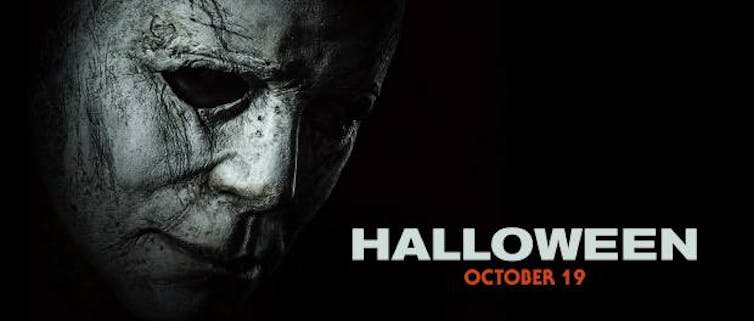Halloween is now firmly part of the seasonal and consumer calendar – but, unlike other celebrations that promote gift-giving, family, love and friendship, Halloween involves disruption, transgression and an open engagement with darker emotions and fears.
Rituals such as carving ugly faces into vegetables, ducking for apples and dressing up as dark or supernatural figures feature around the world in various forms, showing that Halloween is the global melting pot of ideas that come together around October 31.
Yet Halloween is also a strange historical hybrid of an annual festival. Traditionally All Hallows’ Eve marked the changing of the seasons and the cycle of birth and death. Its Celtic cousin Samhain once served as a ritual framework to come to terms with moments of transition and transformation observed in the natural world, the local community and the self. This provided a point of reflection where divisions between life and death became blurred.
Now the changing of the seasons is replaced with the changing of the seasonal aisles in our shops and supermarkets as a domestic ritual has morphed into a commercial one worth $9 billion in the US alone. However, the blurring between life and death has also evolved into the breaking down of more contemporary dualisms. Halloween deliberately disturbs accepted notions of good and bad, right and wrong, natural and supernatural – and, we would argue, self and other.
Samhain-inspired traditions of children playing tricks developed into Mischief Night in parts of the UK and Devil’s Night in the US – both much smaller festivals held at around this time of year when normal rules supposedly don’t apply and people engage in pranks and even acts of vandalism. The custom of “trick or treating” is also thought to have emerged in the US during the 1920s as an attempt to distract children away from acts of vandalism by bribing them with candy.
High anxiety
Halloween became a cause for national anxiety in the US during the 1970s when stories circulated of razor blades and poison being added to Halloween candy. Even as recently as 2016 there was international alarm following reports of “killer clowns” appearing on street corners, chasing children and threatening adults. Some law enforcement agencies even threatened to arrest any adults wearing clown costumes during the Halloween period. And yet supermarkets continue to sell creepy costumes, despite a public backlash against outfits that clearly offend a lot of people.

We highlighted this in our own research exploring the recent scandal of UK supermarkets and online retailers selling Halloween costumes with a mental health theme. Asda supermarket sold an “escaped mental patient” costume while Tesco and Amazon UK stocked similar “psycho ward” outfits. Despite widespread criticism of these costumes and their temporary removal from stores, many are still available today.
As mental health campaigners have argued, such costumes stigmatise mental health issues by creating dangerously misleading connections to violence and criminality. Yet for those who defend the sale of such costumes it is simply a matter of consumer choice.
News media and online discussions surrounding Halloween costumes often focus on a moral discussion about what costumes you should wear or avoid. This is important, but we might also consider some more fundamental questions about why such costumes and products are manufactured in the first place. As consumers, why do we choose to celebrate Halloween by turning to such contentious themes?
Familiar and strange
One way of thinking about the ethics of Halloween comes from the work of artist and theorist Bracha Ettinger. She observes that we are irresistibly drawn to all things “uncanny” because they are both familiar and strange. According to Ettinger, this feeling is a combination of awe and wonder, but also unease and disturbance. This experience of awe is particularly powerful when we encounter uncanny themes that mirror our own fears and anxieties.

Here the rebooting in 2018 of the Halloween movie franchise might also be thought of as another unresolved uncanny tension surrounding our relationship with mental health issues. This is something crudely embodied in both the supermarket costumes and in the masked figure of Michael Myers – murderous escapee of a mental health care facility.
So, rather than stopping at discussions of morally correct conduct at Halloween, we might also use this time of year to reflect on our own fears and how we engage with them through the costumes, horror movies, and associated Halloween products available to us. By reflecting on what frightens us, we may also make space for discussions about who deserves our respect, compassion and care.
As a celebration of supernatural awe and wonder then, perhaps Halloween is an important source of fun and escapism. But as a tension-management ritual it may also serve a more complex ethical role in helping us to understand ourselves and our relationship to otherness and difference. In this way we might all be able to share in and enjoy an “awe-full” Halloween.![]()
Simon Kelly, Senior Lecturer in Management, University of Huddersfield and Kathleen Riach, Associate Professor in Management, Monash University
This article is republished from The Conversation under a Creative Commons license. Read the original article.